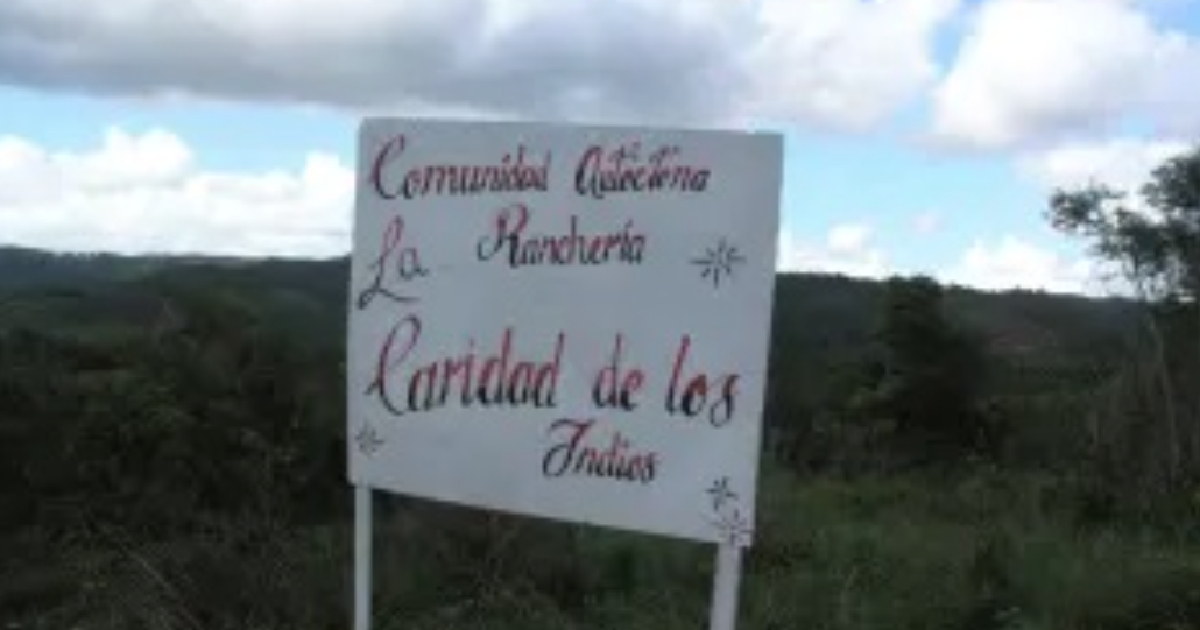Facing the deterioration of their main street and the complete neglect by the Cuban regime, the residents of La Ranchería community in the Popular Council of La Caridad de los Indios, in the Guantánamo municipality of Manuel Tames, decided to take matters into their own hands and repair the road themselves. With their own resources and efforts, the neighbors of this last aboriginal stronghold on the island are improving a road that has been ignored by road workers due to salary issues, and which has become impassable even for tractors due to rainfall, according to the local weekly Venceremos.
The media outlet reports that a segment on the Acontecer program from the CMKS radio station includes an interview with citizen Vladimir Ramírez Ramírez, who mentioned that the road hasn't been repaired for over 25 years along the nearly 30 kilometers between the town of Manuel Tames and the Pinar de Ceiba neighborhood, where mountain transport used to reach. Ramírez asserted that the situation is so dire for the indigenous enclave that it hampers the delivery of basic food supplies to the grocery store and the transportation of agricultural products.
Venceremos highlighted that La Ranchería, nestled in the rugged mountains, is a community of just 11 small houses built to replace traditional huts, inhabited by about twenty people descended from the Taino Indians. These residents managed to survive the barbarism of the conquerors by retreating into the inaccessible areas of the Sagua-Nipe-Baracoa mountain range, and today they maintain their ethnic composition and cultural heritage.
In July 2023, the Cuban government acknowledged that 75 percent of the country's roads and highways are in a technical condition ranging from regular to poor. Eduardo Rodríguez Dávila, Minister of Transport, presented the data before the Parliamentary Commission for Service Attention and stated that the rate of deterioration has not been contained, increasing each year, as reported by Cubadebate.
Last April, the poor condition of one of the bridges connecting Moa, in Holguín, with Baracoa, in Guantánamo, was denounced on social media. A video posted in the Facebook group "ACCIDENTES BUSES & CAMIONES por más experiencia y menos víctimas!" highlights the dangers faced by people traveling on this road, filled with potholes that threaten their physical integrity and that of their vehicles.
Community Efforts and Infrastructure Issues in Cuba
Below are some frequently asked questions regarding the community efforts in La Ranchería and the broader infrastructure issues in Cuba.
Why did the residents of La Ranchería decide to repair the road themselves?
The residents took the initiative to repair the road due to the severe neglect by the Cuban authorities and the unmanageable condition of the road, which hindered the delivery of essential supplies and agricultural products.
What is the significance of La Ranchería in Cuban history?
La Ranchería is significant because it is home to descendants of the Taino Indians who survived the conquest by retreating into the Sagua-Nipe-Baracoa mountains. The community maintains its ethnic and cultural heritage to this day.
What percentage of Cuba's roads are in poor condition?
According to the Cuban government, 75 percent of the country's roads and highways are in a technical condition ranging from regular to poor, with the situation worsening each year.
How was the poor state of the bridge connecting Moa and Baracoa highlighted?
The poor condition of the bridge was highlighted through a video posted in the Facebook group "ACCIDENTES BUSES & CAMIONES por más experiencia y menos víctimas!", showing the dangers of traveling on the potholed road.
